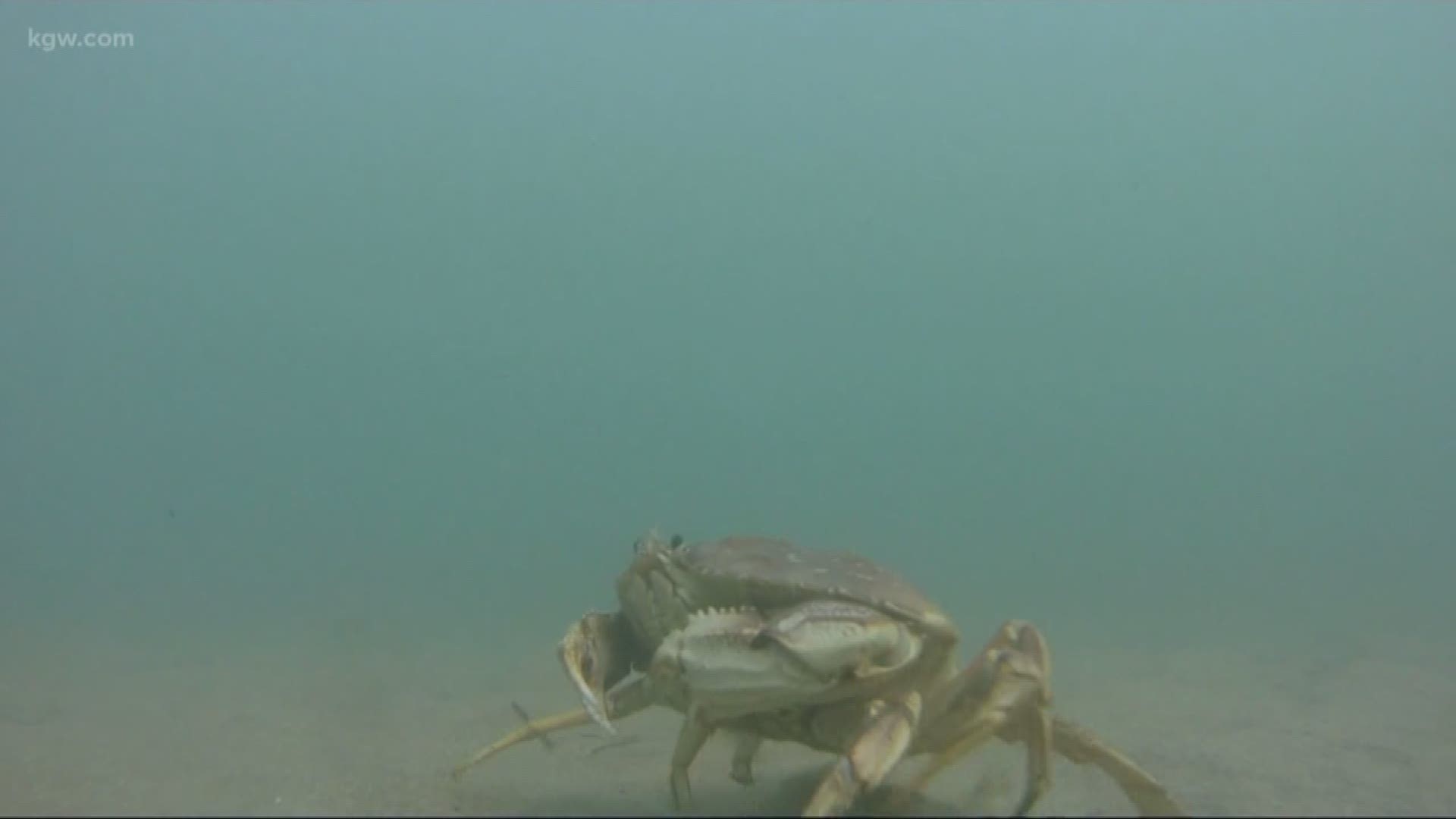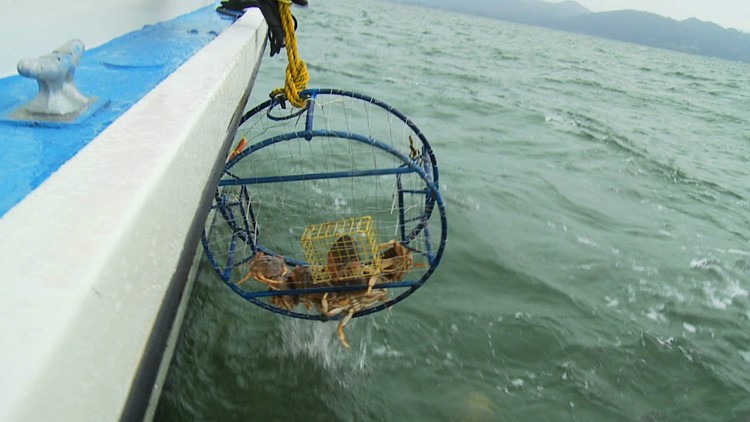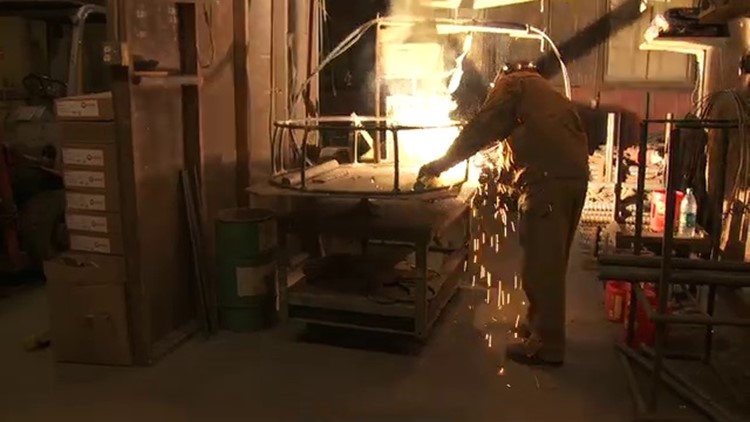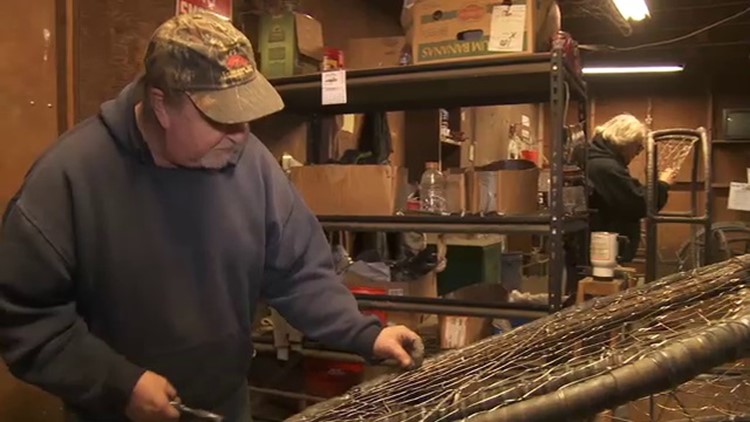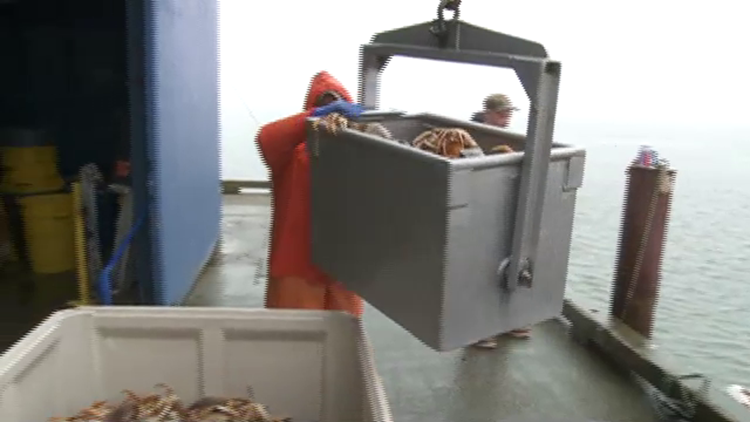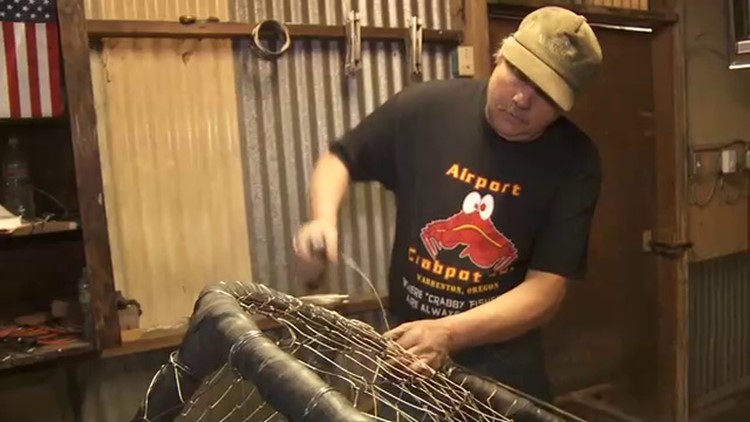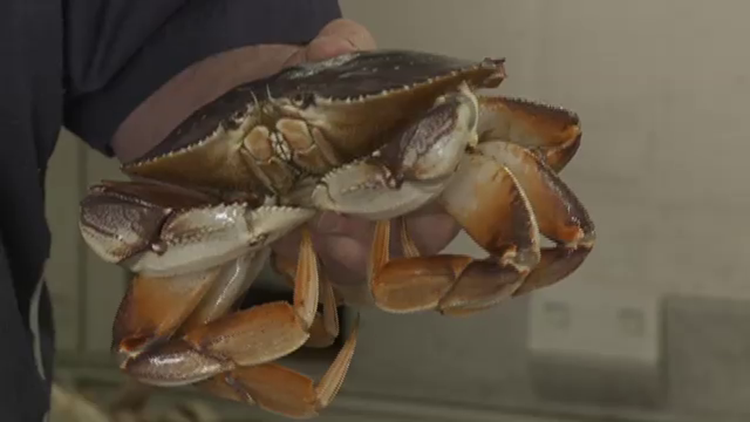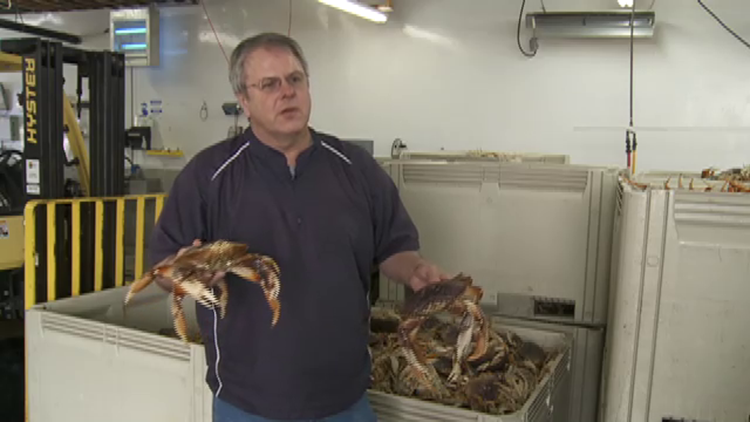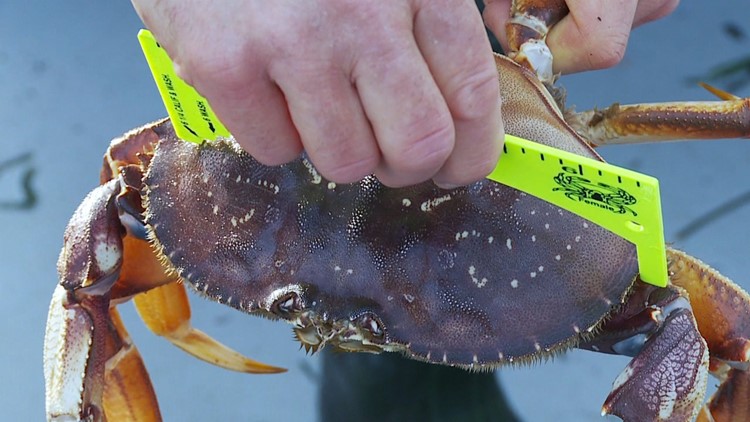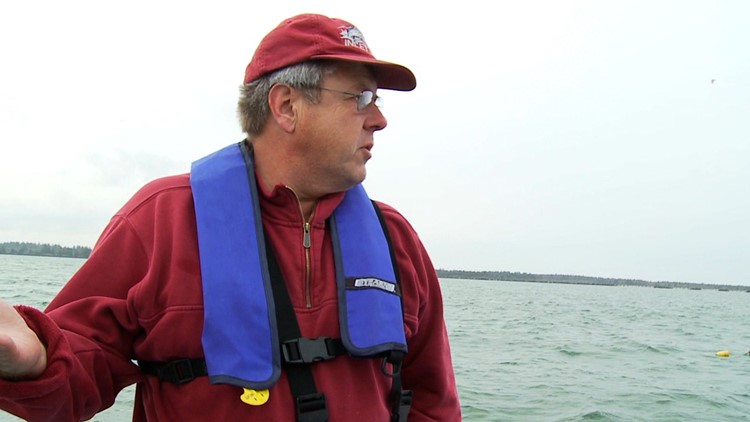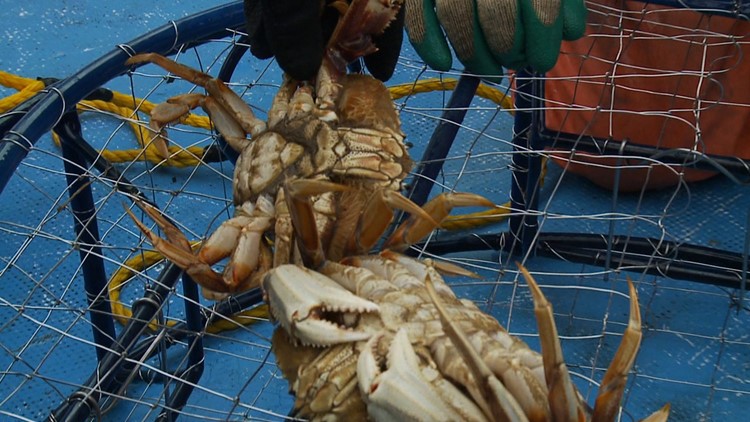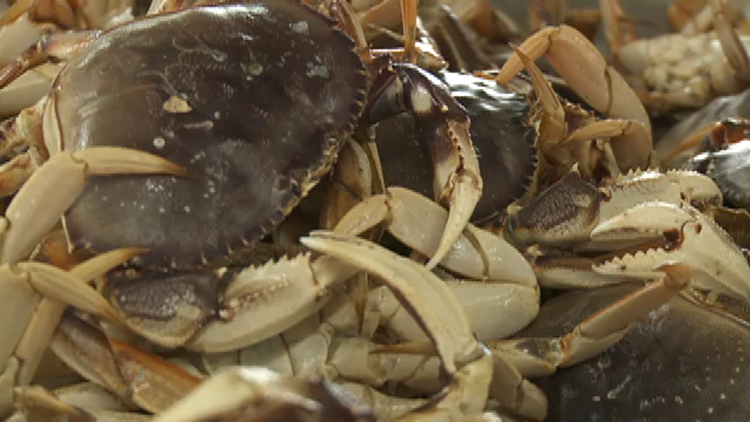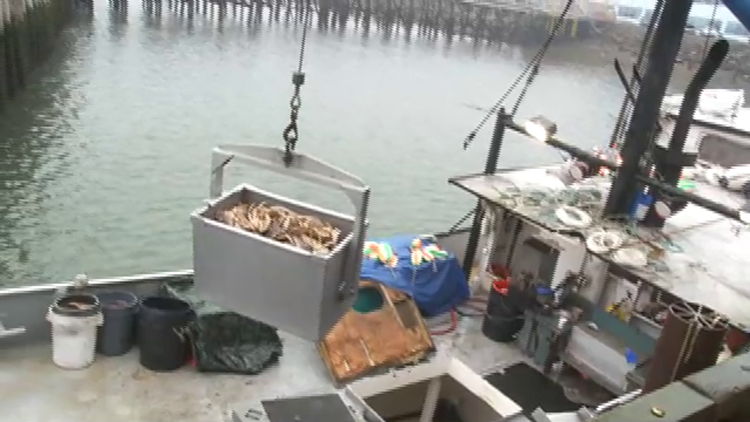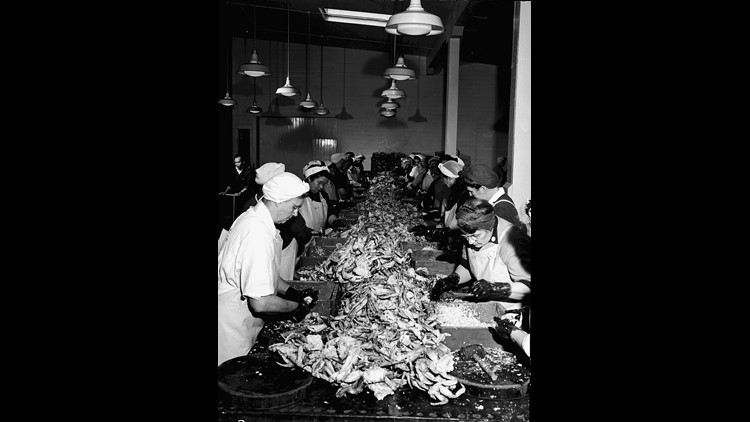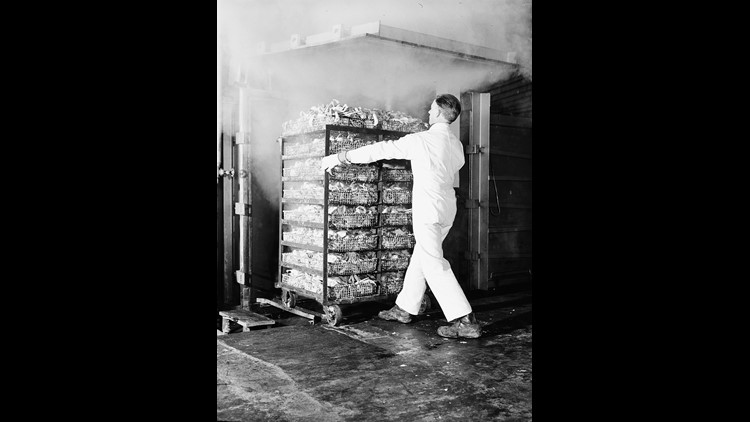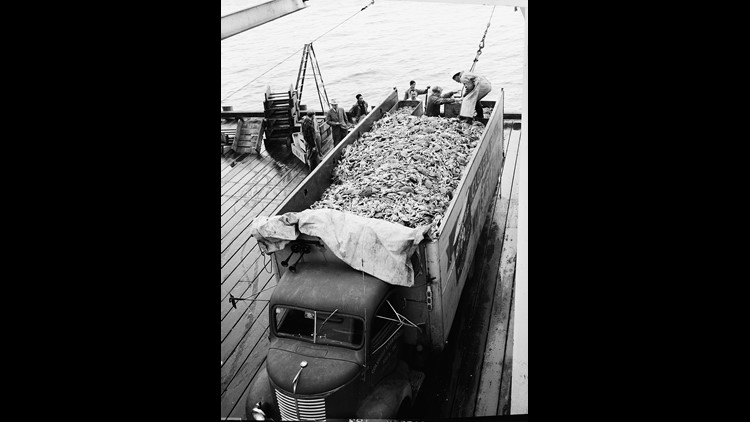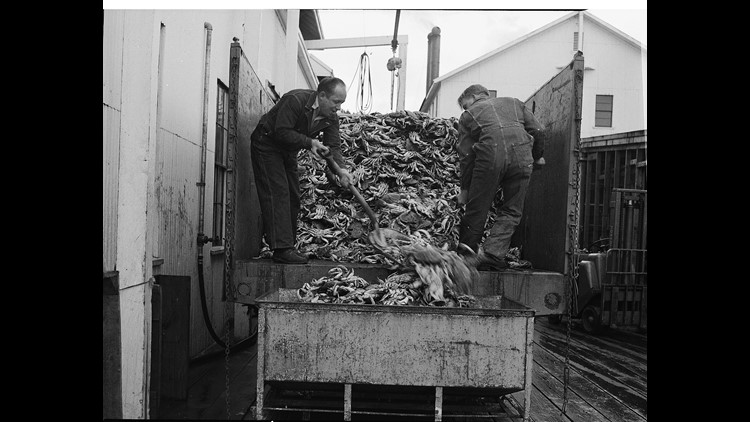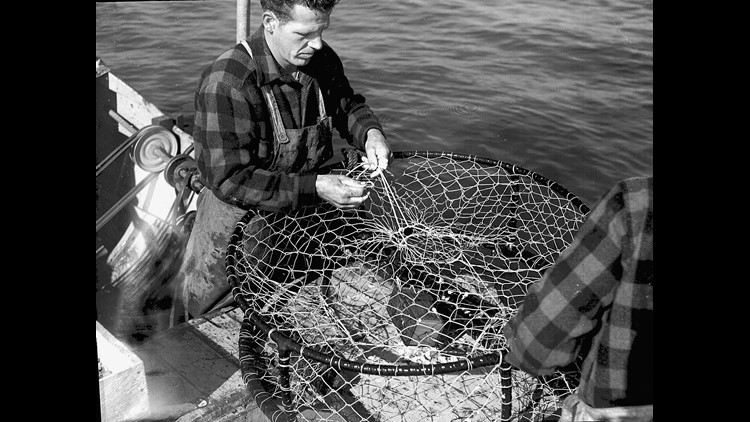PORTLAND, Ore. — Steve Fick first explored the Columbia River estuary as a kid, so he knows his way around the vast waterway where the river meets the sea.
We left the snug harbor of Hammond, Oregon near Astoria and slowly motored the short distance downriver to an area just off Clatsop Beach.
Fick had prepared five large crab pots or traps with varied baits – a strategy he often uses so to “see what the crabs prefer.”
Sometimes he’ll use turkey legs, chicken wings, shad or salmon carcasses – even a can of tuna for crab bait.
“Oh yes, a can of tuna fish is perfect bait," exclaimed Fick. “All you do is perforate the can so that the scent comes out – you can also buy canned sardines or mackerel too – both work well. As long as they have a high oil content, it seems to fish well – the scent is what draws the crab into the pot.”
Each Oregon crabber must carry an Oregon Department of Fish and Wildlife Shellfish License. Each crabber is allowed to use up to three crab pots.
We timed our trip to fish our traps during the last hour of the incoming tide and then through the high slack tide period. (That’s often the best crabbing time.)
Steve said it’s the safest time to crab in the estuary. “There is no reason to be out here on the ebb tide – that’s the out-going tide and things can go from bad to worse in a heartbeat. It can be the most dangerous part of the tide cycle and this river can change so fast. You just don’t take chances out here.”
Fick said that each trap should soak for 15-20 minutes – that allows enough time for the crabs to locate the bait and enter the pot.
Each crabber is allowed a dozen male crabs apiece and in Oregon they must be five and three-quarters (5¾) inches across the back.
Photos: Winter Crab
Females are protected to preserve the breeding population of crabs. A crab gauge or other measuring device is essential gear since some crabs miss the mark by only a fraction of an inch.
Steve and I soon had our hands full of fresh crabs, but truth was the trap made the catching easy - and it turns out, the crab pot is “All Oregon!”
At the Airport Crab Company in Warrenton, they have rolled the steel into rings, welded the weights in place, wrapped the rings in rubber and woven the steel mesh into crab pots since 1948.
“Building a crab pot – one that will fish well – is a science,” said company owner Verne Lamping.
His wife, Lisa Lamping, added, "They really got it right way back then – there are little things you can do but for the most part there isn’t a better way to catch crab.”
Lisa is right! Dungeness crabbing dates to the earliest days of commercial fishing in Oregon’s offshore waters.
It was a profitable way to make a living for many commercial fishermen during the slack times between salmon runs.
Inside Oregon’s only sport and commercial crab pot manufacturing company, you soon see that the heritage of the business is alive and well.
Gene Elliott, Paul Shaw and Mike Gill collectively own more than a century of experience building pots the old fashioned way – with their hands!
They hand knit each pot using stainless steel wire to make each pot’s top, bottom and sides.
“Get ready to bleed,” noted Gill with a chuckle. “It is really hard on the hands.”
The 18-guage stainless steel wire requires tough, quick hands and a sharp eye to knit the mesh just right.
“You have to hold the meshes at exactly the same size,” said Shaw. “So, you really must stay focused on the work all of the time.”
Gene Elliot’s hands worked at a blurry pace – swiftly wrapping the mesh weave, seamless and smooth.
“I’ve been at this for more than 37 years – just like these fellas, but I was also a fisherman, so I made and repaired my own gill nets. I was already familiar with the knitting techniques before I started working on crab pots.”
Lisa Lamping has long admired the weavers’ efforts – she explained that it’s all "piece work" so each weaver must be accurate and speedy if they wish to make money.
“Each of these men is able to consistently weave the mesh accurately; the meshes must be about two inches wide. It’s very old school and it hasn’t changed much in a hundred years.”
Down at the dock is where the work pays off!
Oregon’s Dungeness crab harvest is the state’s most valuable seafood.
Last year, the coast-wide catch was worth nearly $75 million.
“It’s an economic component that fills a big void from December to March for many fishermen,” said Fick, who owns Fishhawk Fisheries in Astoria.
“Families live here and the infrastructure of support - like the crab pot businesses or the marine supply stores – all of that business stays in our community and it is key to the viability of rural life along the Oregon coast.”
It is also a lot of fun to catch your own crabs and then head to the kitchen where Steve shared a favorite recipe called a “Stuffed Crab Sandwich.”
“You can do a lot of different things with crab meat,” said Fick. “You can make a chowder, fritters, salads – sandwiches – so many different things. You can mix it with fettuccine, other seafood, so it’s very versatile.”
Steve mixed one cup of grated Swiss cheese with two cups of crab and added one teaspoon each of Worcestershire sauce and lemon pepper before he mixed in one cup of mayo and half a cup of sliced olives.
The mixture was then stuffed into each half of a hollowed-out sandwich roll.
Steve then spread a generous amount of grated Parmesan cheese across the top of each roll and slid the tray of sandwiches into a 375-degree oven for seven to 10 minutes.
“This is a filling dinner,” he noted. “You need to be in the mood for something rich and robust – it works well on a cold winter’s night.”
It was a perfect way to round out our crabbing adventure and bring the day’s activity full circle: from the estuary to the dining table.
Interestingly, Steve added that 80 percent of the crab is caught in the first month of the season – it’s also the time when prices for the seafood are at their lowest.
Plus, even if you don’t sport fish for crab, the annual commercial crabbing season provides fresh Oregon Dungeness in your local grocery.
As we enjoyed a very filling seafood dinner, I asked Fick what he liked most about the adventure that’s just off his front door step.
“Oh, it’s simple to do and everyone can be involved in it. It’s easy to catch a dozen crabs per person with lots of action for kids. And – you never really know until you pull the pot up what you got and that is fun!”
If you would like to visit more of Oregon – consider a walk on the wild side with my latest book: “Grant’s Getaways: Oregon Adventures with the Kids.” You’ll find activities to engage any kid, from archery to clamming on the coast to hunting for thundereggs to zip-lining through trees in an aerial adventure park.
In addition, be sure to check out “Grant’s Getaways Guide to Wildlife Watching in Oregon.” you will enjoy 48 uniquely Oregon adventures highlighting my fish and wildlife encounters. scores of colorful photos by “Grant’s Getaways” photographer, Jeff Kastner, show off some of our finest moments in the field. You can also learn more about many of my favorite Oregon adventures in: "Grant's Getaways: 101 Oregon Adventures."
You can email Grant @ Gmcomie@kgw.com

